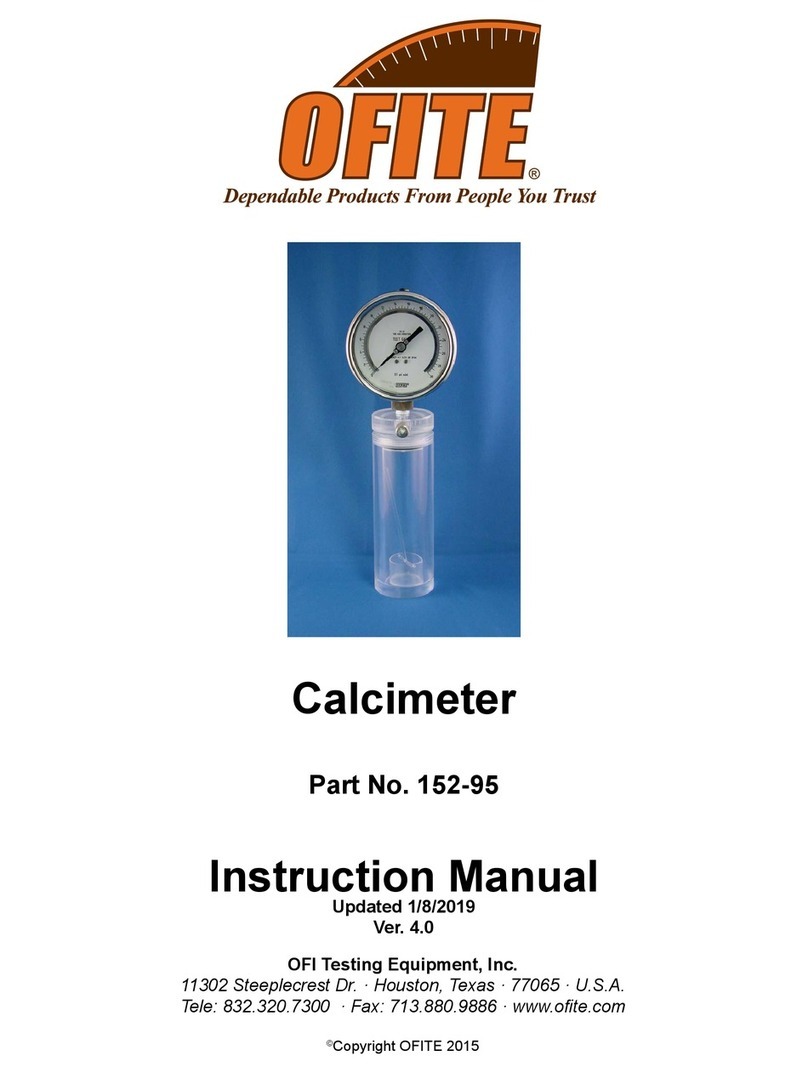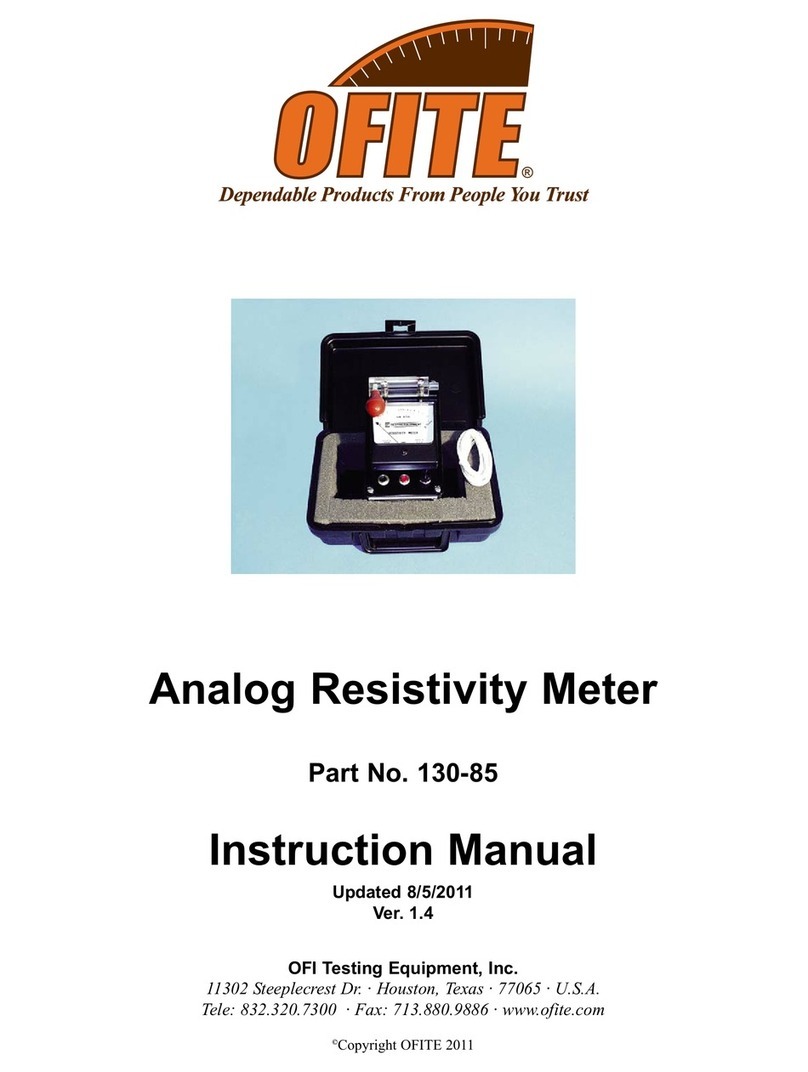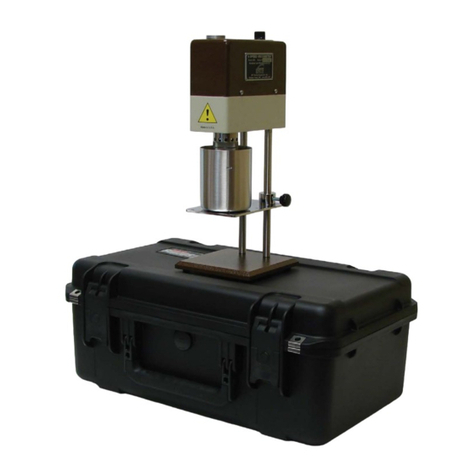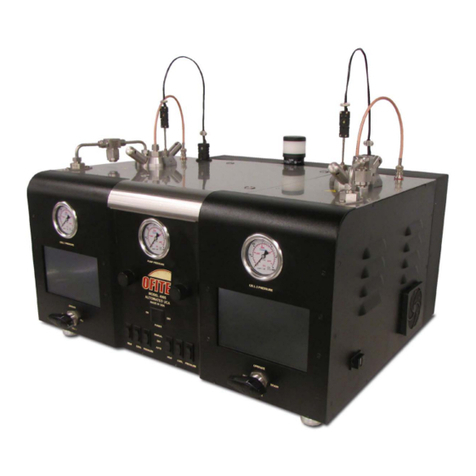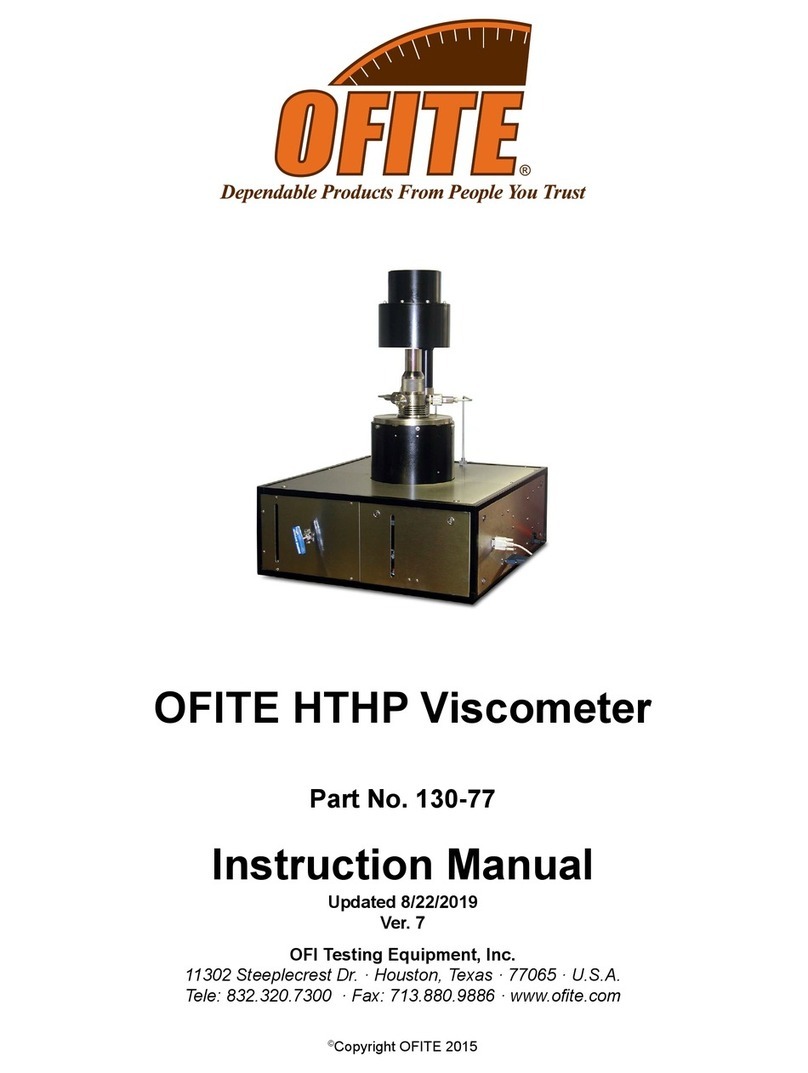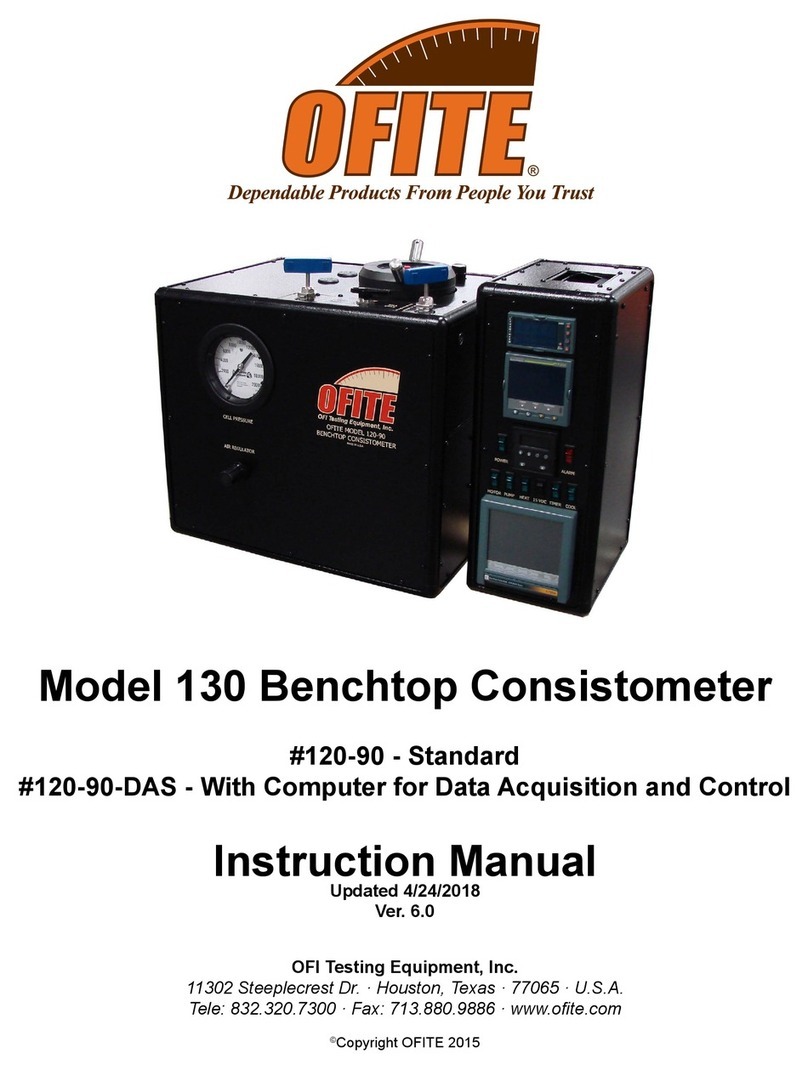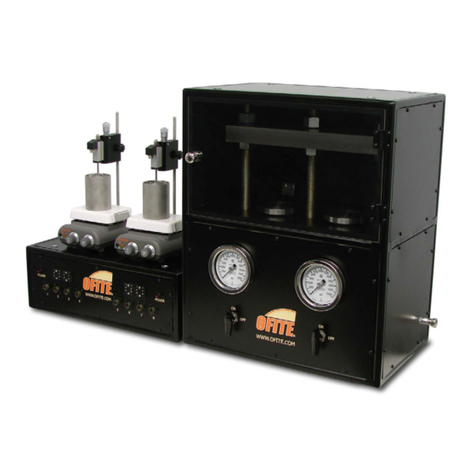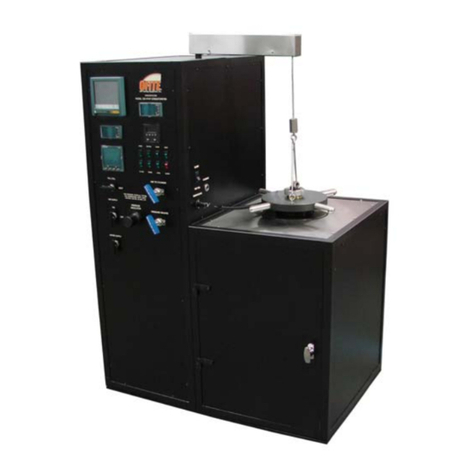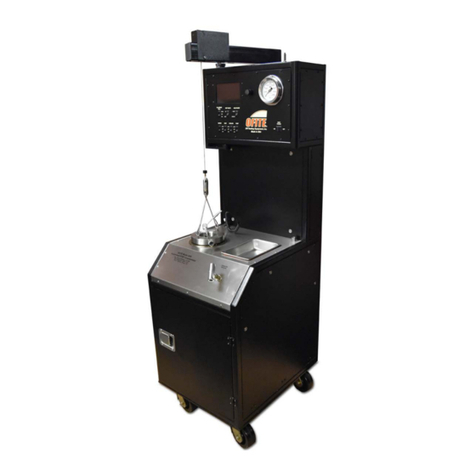
OFITE, 11302 Steeplecrest Dr., Houston, TX 77065 USA / Tel: 832-320-7300 / Fax: 713-880-9886 / www.ote.com 2
For enhanced data collection, OFITE is pleased to introduce the new Model
1100 Pressurized Viscometer. This fully-automated system accurately deter-
mines the ow characteristics of fracturing uids and drilling uids in terms of
shear stress, shear rate, time, and temperature at pressure up to 2500 PSI.
Using the exclusive ORCADA®software, a computer novice can operate the
Model 1100, and yet the system is versatile enough for advanced research
and demanding test parameters. The rugged Model 1100 is suitable for both
eld and laboratory use. A waterproof case with wheels makes the unit com-
pletely portable.
#130-75-02 Cap O-ring, -036, Viton 75D
#130-75-04 Thermocouple O-ring, -002, Viton 75D
#130-75-20 " Spanner Wrench
#130-75-27 " T-handle Allen Key
#130-75-28 " Allen Key
#130-75-70 Waterproof Plastic Case with Casters
#130-78-04 Sample Thermocouple
#130-78-05 Main Seal
#130-78-13 B1 Bob; Hastelloy with Threads for Stainless Steel
#130-78-17 Bob Shaft Bearing
#130-78-18 Bearing, Main Body
#130-78-20 Rotor Cup O-ring, -218, Viton 70D
#130-78-34 Packing Washer
#130-78-36 O-ring, -117, Viton 75D
#130-79-15 Serial Cable; OB9; M/F
#130-81-001 O-ring, -029, Viton 75D
#130-81-002 Internal Pressure O-ring, -034, Viton 75D
#130-81-003 O-ring, -010, Viton 70D
#130-81-04 Spiral Retaining Ring
#130-81-07 Valve Stem
#130-81-071 Rotor, R1 (C276), HP
#130-81-082 Torsion spring, 4,000 Dyne/cm2
#130-81-19 Bearing Retainer
#130-81-21 Seal Nut
#130-81-22 Lower Bearing
#130-81-27 Retaining Ring, VHM-28
#130-81-37 .050 Allen Key
#130-81-38 Seal Nut Wrench
#130-81-169 Shaft Assembly
#132-83 Calibration Fluid; 200 cP; 16 oz; Certied
#135-05 Spring Retaining Ring
#152-38 AC Power Cord; 3-Conductor International (Continental Euro-
pean)
#153-00 Bottle Brush
#153-55 Silicone Stopcock Grease; Dow Corning; 150g Tube
#153-67 60cc Disposable Syringe
#170-17 Valve Stem O-ring, -008, Viton 75D
Intro
Components












